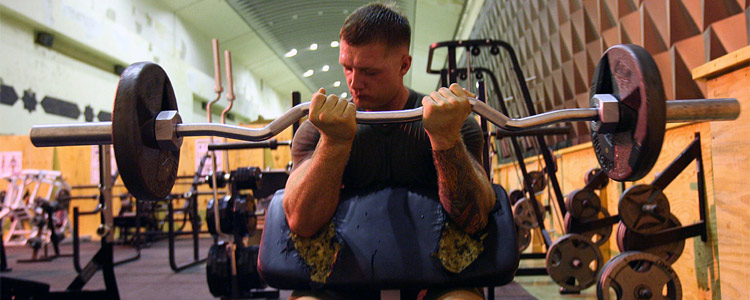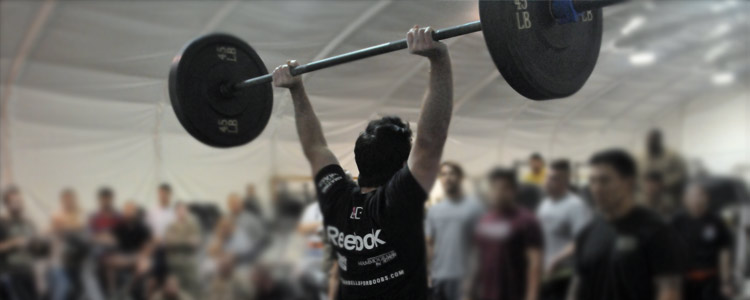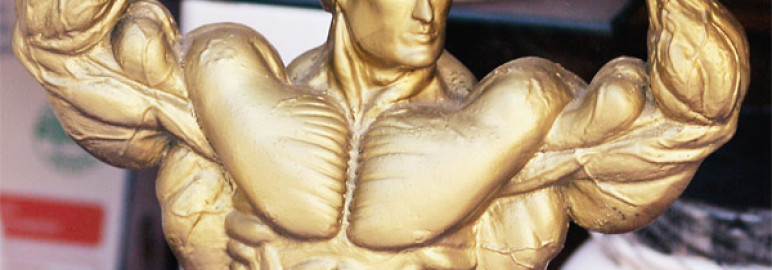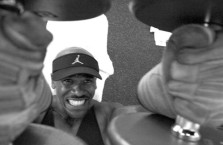Strength is the foundation of nearly all physique and performance goals. When you’re strong, you more easily gain muscle size, lose fat, run faster, hit harder, play longer, and move more living room furniture for your wife.
We’ve rounded up 10 no-questions-asked tips to help you make everything in your life feel just a little bit lighter.
1. Own the “Big Four”

The squat, deadlift, bench press, and shoulder press are the best strength-building exercises, period. The chinup and row are great moves too, but don’t make them the focus of your workout — they can be assistance lifts to complement the bench and shoulder press, keeping your pulling muscles in balance with the pressing ones.
2. Use barbells first

Forget all the fad equipment. The barbell is king, the dumbbell is queen, and everything else is a court jester — it may have its place, but it’s not essential. Start your workouts with barbell exercises, such as the “big four,” as described above. Barbells let you load a lot of weight, and lifting heavy is the first step toward getting stronger. Once your heaviest strength exercises are out of the way, you can move on to dumbbell and bodyweight training.
3. Keep it simple

Some trainers make their clients lift with a certain rep speed, like three seconds up, one second down. But know this: There’s no need to count anything but reps during a set. Simply focus on raising and lowering your weights in a controlled manner, pausing for a one-second count at the top of the lift. Using an arbitrary tempo can lessen tension on your muscles or force you to use varying amounts of weight, slowing your progress. The only way to be sure you’re getting stronger is if your loads consistently increase.
4. Maintain a log
Write down your exercises, sets, reps, and the fate of each workout. Keep track of your best lifts and the most reps you’ve done with a certain weight on an exercise. Constantly strive to improve those numbers.
5. Don’t overdo it

Try to stick to three or four lifts per workout. Keeping your workouts short helps you take advantage of hormonal surges. When you do too many exercises in a session, at least some of them get done half-assed. All you need is one main lift per workout (one of the big four), one or two assistance lifts (for keeping the body in balance and further strengthening the muscles that perform the main lift), and then core or specialty work at the end (ab exercises or some forearm or calf moves, depending on your goals). Doing any more lessens your results.
6. Think five
You should rotate many different rep ranges in your workouts, but sets of five seem to offer the best blend of muscle size and strength gains. If you’re pushing through one of the big four moves, you’ll find that your form often breaks down after five anyway.
7. Add weights slowly
The main reason people plateau and stop gaining strength is that they go too heavy for too long. Abandon your ego and do your main lifts using 10% less than the most weight you can lift for the given rep range. Increase the weight each session — but by no more than 10 pounds — and stick with the same lifts. You’ll rarely plateau again.
8. Balance your training
Whatever you do for one side of the body, you must do for the other side. Follow that rule in your workouts and you should be able to avoid injury and muscle imbalances. If you’re doing squats (mainly a quad exercise), also do Romanian deadlifts (which hit the hamstrings hard). Your chest exercises should be balanced with back-training lifts. You don’t necessarily have to do your balance work in the same session, but it should be done in the same week. In general, follow a ratio of two-to-one between your pulling-and-pushing movements. So if you bench-press on Monday (and most of the world seems to), you can do chinups on Tuesday and bent-over lateral raises on Thursday, for example. Every other pressing exercise you do should follow this formula.
9. Do it right. Form is key

You may think you know how to perform the big four, but you could probably get more out of them. Here are some quick pointers for each one.
Squat: Begin the squat by pushing your hips back as far as you can. Keep your lower back arched and you should feel a stretch in your hamstrings. When your hips are bent, begin bending your knees and squatting low. This is what you need to squat maximal weight.
Deadlift: Use the same stance you would to perform a jump — your legs should be narrowly placed. When you bend down to grab the bar, keep your hips down and your back straight, with your shoulders directly over your knees.
Bench Press: Start with your head off the bench. Keeping your feet steady, grab the bar and pull your body up off the bench and forward, so that when your butt comes down on the bench your lower back is very arched. Squeeze your shoulder blades together. Your range of motion should be significantly shorter for stronger pressing.
Shoulder Press: Flare your lats when the bar is at shoulder level. It will allow you to use more weight.
See more about Strength at Men’s Fitness.







![Tasty, Healthy Food Substitutes [VIDEO]](http://FitPhreak.com/wp-content/uploads/2016/06/2016-06-13_1042-223x145.jpg)
![Go Vegan The Right Way [VIDEO]](http://FitPhreak.com/wp-content/uploads/2016/05/Vegan-223x145.jpg)




![Pick Your Perfect Pair of Shoes [VIDEO]](http://FitPhreak.com/wp-content/uploads/2015/01/sports-shoes-332129-223x145.jpg)